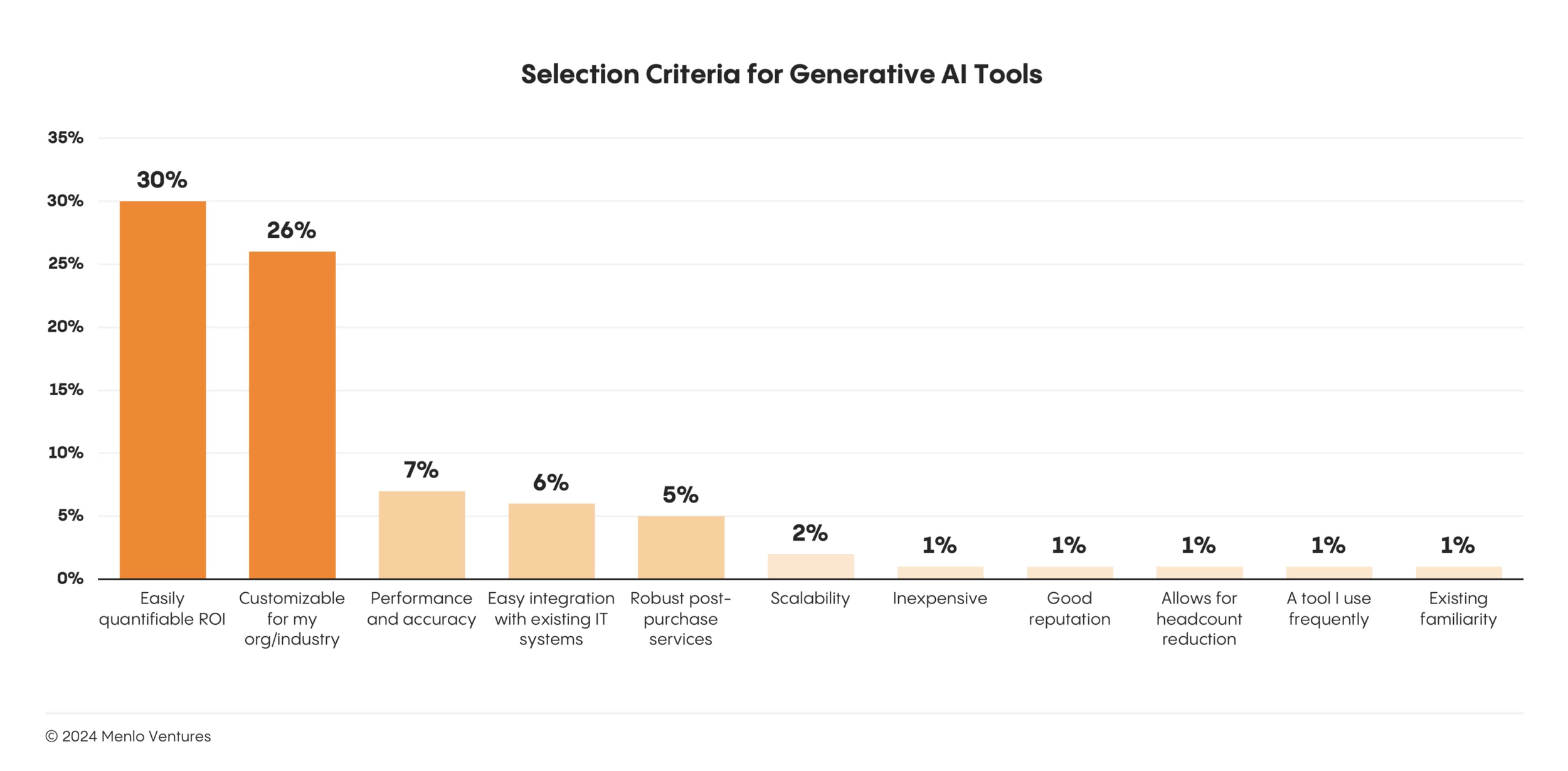The State of Generative AI in the Enterprise
Key Insights for 2024 and Beyond
The latest report from Menlo Ventures on the state of generative AI in the enterprise provides a fascinating snapshot of where we are—and where we’re headed. As someone deeply immersed in the world of AI, I found this report packed with valuable insights that paint a clear picture of how organisations are adopting and adapting to this transformative technology.
Here are my key takeaways and thoughts on what they mean for the future of work and enterprise innovation.
2023 into 2024: Turning AI On
Last year marked the start of generative AI adoption in the Enterprise for many organisations. It was a period of experimentation and learning, dominated by tools from major tech incumbents namely Microsoft. Businesses were just beginning to see how AI could assist in workflows, and the focus was on getting started rather than achieving tangible outcomes.
However, as enterprises began understanding AI's potential, startups and specialised players started to gain traction. One standout example is Claude by Anthropic, which has doubled its enterprise market share. This shift signals the growing demand for tailored solutions that address specific business needs rather than one-size-fits-all approaches.
Development: The Fastest-Growing Use Case
Interestingly, the development use case has emerged as the fastest-growing application of generative AI in enterprises. This makes sense. Developers are increasingly leveraging tools like Cursor, which streamline repetitive tasks, accelerate coding processes, and enable greater focus on innovation.
These tools are not just enhancing efficiency but also reshaping the development lifecycle by reducing grunt work. As adoption deepens, we can expect to see significant efficiency gains and improved outcomes for both developers and their organisations.
Value and ROI: The New Focus
While early AI adoption was often driven by curiosity and FOMO (fear of missing out), enterprises are now demanding more than just shiny new tools—they want measurable value.
The priority for 2024 is clear: delivering solid ROI. Organisations are focusing on solutions that provide tangible benefits, whether through cost savings, productivity boosts, or other efficiency metrics. This marks a maturation of the AI space, where hype is giving way to meaningful, results-driven adoption.
Looking Ahead to 2025: The Rise of Agentic Agents
Looking beyond 2024, the Menlo report predicts that 2025 will be the year of Agentic Agents—AI systems designed to assist employees with focused, repeatable tasks. These agents will act as specialised assistants, seamlessly integrating into workflows to drive productivity and consistency.
This evolution represents a significant step forward, moving from tools that require user input to agents that proactively execute tasks. Imagine the potential of AI that doesn’t just respond to prompts but actively anticipates needs and delivers outcomes autonomously.
What This Means for Enterprises
The next phase of generative AI adoption will be about strategic integration:
Tailored solutions will outpace generalised tools as organisations seek to address specific challenges.
Education and enablement will remain critical to empowering teams to fully leverage AI’s capabilities.
Experimentation and governance will ensure adoption is both innovative and responsible.
Enterprises that focus on these areas will not only maximise ROI but also position themselves as leaders in the AI-powered future of work.
Final Thoughts
The state of generative AI in the enterprise is evolving rapidly. From 2023’s focus on experimentation to 2024’s drive for ROI and 2025’s emergence of Agentic Agents, the trajectory is clear: AI is no longer just a trend; it’s a fundamental part of the business landscape.
For organisations ready to embrace this transformation, the time to act is now. As generative AI tools become more specialised and impactful, the opportunities for growth and innovation will only expand.

